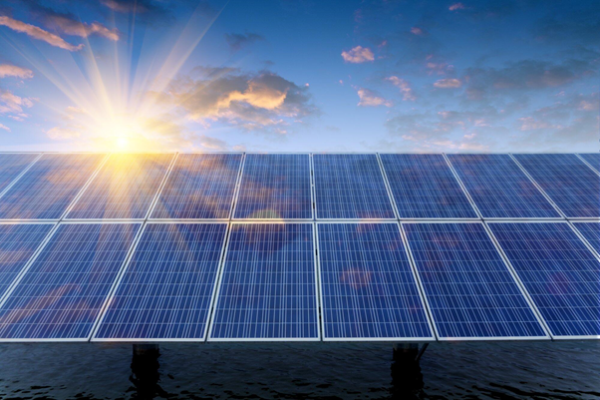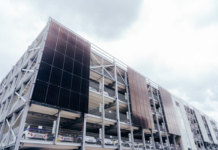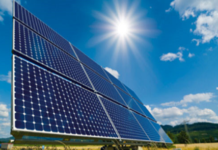
Learn the step-by-step process of solar panel roof installation services on our website. Discover how to efficiently install solar panels on your roof.
Is your energy bill skyrocketing? Imagine cutting those costs while saving the planet. Solar panel roof installations are the future, and it’s here.
Perfect for the eco-conscious homeowner or the savvy business investor. In this sustainable living guide, we’ll unravel the process of solar panel roof installation services, making it simple and enticing.
But how does it all work? Keep reading to find out.
Let’s dive in! Site Assessment and Feasibility Study
First things first, a skilled technician will inspect your property. This step is crucial to determine the viability of a solar panel roof installation and optimize its design. Here, the technician will analyze factors such as:
Roof Orientation and Slope
Ideally, a roof should face south in the Northern Hemisphere to capture maximum sunlight throughout the day. The optimal slope is typically around 30 to 45 degrees, ensuring the best angle for solar exposure while also facilitating water runoff.
Roof Material and Condition
The type and condition of your roof can impact the installation process. For instance, shingle roofs are easier to work with compared to tile or metal roofs.
Additionally, if any repairs or replacements are needed, it’s best to do so before installing solar panels.
Shading Analysis
Shadows from trees, buildings, or other obstructions affecting the panel’s efficiency. The technician will assess the potential shading impact and recommend solutions such as tree trimming or panel placement adjustments.
Structural Integrity of the Roof
Solar panel installations require a sturdy and stable foundation. The technician will check the strength of your roof and make any necessary reinforcements before proceeding with the installation.
Local Weather Conditions
Extreme weather conditions, such as heavy snow or strong winds, can affect the performance and durability of the panels. The installer will consider these factors and make any necessary adjustments to ensure your panels can withstand local weather patterns.
Available Roof Space for Optimal Solar Panel Placement
The size of your roof and the available unobstructed space will determine the number and placement of solar panels. The technician will also consider factors such as:
- roof obstructions
- vent pipes
- chimneys
Also, the angle and spacing between panels will be calculated to ensure maximum energy production. Based on these assessments, the technician will determine if your property is suitable for a solar panel roof installation. If it is, then the design process begins.
Solar System Design and Permitting
This phase is critical as it ensures the installation meets local building codes and electrical standards. A solar engineer or designer takes the information from the site to assessment to create a custom solar system for your property. This includes:
- selecting the right type and size of panels
- planning the layout
- designing the electrical system
Before installation begins, you need the right permits. The solar installer usually submits detailed system designs to local building departments. They’ll also ensure the design complies with all:
- local codes
- state codes
- National Electrical and building codes
Then, they’ll coordinate with local utility companies for grid connection approval. This step can take some time, so patience is key. Once all permits are approved, the installation process can start.
Choosing the Best Solar Panels and Equipment
Solar panels come in different types and sizes, but not all are created equal. The solar installer will recommend the best panel for your unique property needs. Considerations include:
- energy efficiency
- durability
- aesthetics
Also, other components such as inverters, mounting systems, and wiring will be carefully selected to ensure optimal performance and safety.
Installation Day
After all permits are approved, it’s time for the main event- installation day! Here’s what you can expect:
Pre-Installation Preparation
The installers will arrive with the necessary tools, equipment, and materials. They’ll also take safety precautions such as wearing protective gear and setting up ladders or scaffolding.
Mounting the Panels
The panels are carefully placed and secured onto your roof using mounting systems. These systems keep the panels in place while also allowing for ventilation to prevent overheating.
Wiring and Electrical Work
Wires are then connected from the panels to the inverter, which converts solar energy into usable electricity. The inverter is usually installed indoors, so wiring will be done through your property’s walls or attic.
Inverter Installation and Monitoring
Your solar system’s heart is the inverter. It plays a crucial role in converting DC electricity from your panels into AC electricity for your home or business use.
Modern inverters also come with monitoring systems, allowing you to track your energy production and usage in real time. This feature is handy for maximizing your system’s efficiency and catching any issues early on.
Solar Panel Cleaning and Maintenance
Solar panels require minimal maintenance, but keeping them clean is essential for optimal performance. Depending on your location and weather patterns, you may need to schedule periodic cleaning to remove any:
- dust
- debris
- bird droppings
Also, regular inspections by a professional are recommended to identify and fix any potential issues before they become costly problems. However, most systems are highly durable and require little intervention.
For instance, for solar energy in Chicago, the local climate necessitates specific maintenance strategies. This is especially beneficial during the winter months when snow accumulation can impact panel efficiency.
Homeowners need to be proactive in clearing snow to maintain the optimal performance of their solar energy systems.
Enjoying Your Solar-Powered Property
Now that your solar panels are installed, it’s time to reap the benefits of a solar-powered property. Enjoy significantly lower energy bills as you harness the power of the sun.
Not only does this reduce your carbon footprint, but it also increases your property’s value. Experience the satisfaction of energy independence, knowing that you’re contributing to a greener planet.
Plus, take advantage of possible tax credits and rebates for even more savings. With minimal maintenance required, your solar system is designed to provide hassle-free operation for years.
Exploring the Process of Solar Panel Roof Installation Services
Congratulations on taking the first step toward a more sustainable and cost-efficient future. By now, you understand the streamlined process of solar panel roof installation services and the myriad benefits they offer.
Don’t let another day pass by paying high electric bills and missing out on the rewards of renewable energy. Harness the power of the sun today, for a brighter tomorrow.
Did you find this article helpful? Check out the rest of our blog now!


















